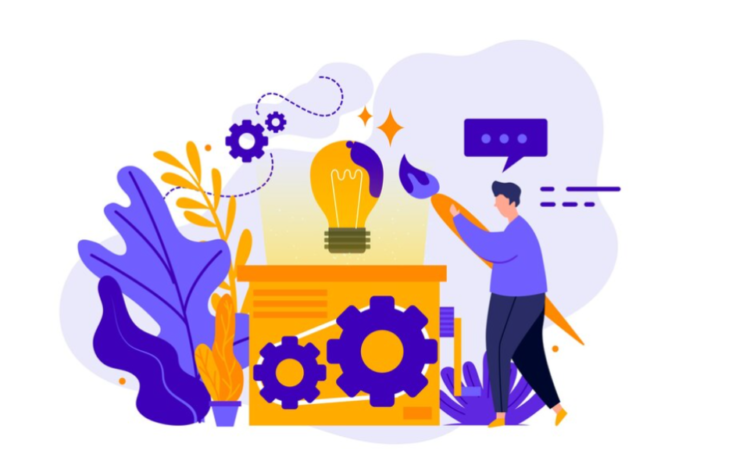What are the 4 Major Types of Product Development?

Understanding the process of software development involves various strategies and approaches. This guide details four essential types, providing you with insights to select the best approach for your project. By focusing on user experience, managing costs, and meeting deadlines, you can streamline your development process and ensure market readiness. Explore the stages from initial concept to manufacturing and see how each strategy can influence your product’s success.
Understanding the Product Development Process
Product development is a comprehensive process that involves conceptualizing and researching an idea, designing it, building it, and bringing it to market. This process comprises four key phases: opportunity validation, design, development, and launch and iteration. Product managers play a crucial role in overseeing each part of this process.
Each phase includes various considerations, methodologies, best practices, and secrets to success. These four pillars of product development are essential for understanding the intricacies of the work involved. Let’s break down each part of the process in detail.
Understanding the different stages of new product development is crucial for success. A detailed guide on software product development provides insights into planning, execution, and key strategies.
1. Validation of Product Opportunities
The initial phase in product development is known as the validation of product opportunities. This phase entails defining the problems to be solved and identifying the target audience. It focuses on discovering new opportunities and evaluating the feasibility of developing the product.
This phase typically begins with a hypothesis or aligns with the strategic direction of the company’s product strategy. Before progressing to creating feature specifications or initiating coding, product managers must determine what to build and confirm that it will deliver value to both users and the business.

Key Elements of Opportunity Identification
During this data collection stage, product managers should consider three crucial questions to assess strategic alignment, user value, and business value:
- Does the product or feature align with our strategic roadmap?
- Are we delivering value to the users?
- Will the development of the product or feature yield a significant return on investment?
These questions help clarify the concepts of strategic fit, user value, and business value:
- Strategic Fit: An opportunity aligns strategically when it supports the objectives at all business levels, gaining easier approval from leadership and stakeholders;
- User Value: Understanding and validating the user’s problems is vital. This insight allows product managers to develop solutions that address these issues effectively. A product unlikely to solve a pertinent user problem will generally see lower adoption rates;
- Business Value: The primary goal is to address user problems in a manner that also generates value for the business, such as a feature that enhances the sales conversion rate, thereby boosting revenue.
The Opportunity Validation Process
Validating an opportunity involves confirming its strategic fit, user value, and business value, followed by aligning with all pertinent stakeholders, including leadership. It’s essential to ensure that there is consensus on the opportunity’s validity across all three areas.
Opportunity validation can be structured into four steps:
- Conduct a manager briefing: This meeting helps gather insights about the newly assigned project and establish shared expectations;
- Refine the user value: Engage directly with users through both quantitative and qualitative methods, such as user interviews, to refine the value the opportunity presents to them;
- Refine the business value: Reassess the initial assumptions to ensure the project will be beneficial for the business;
- Validate and communicate the opportunity: Missteps here can disrupt the development process, requiring rework by core team members or causing late-stage issues due to unclear goals.

2. Design Phase
The second phase in the product development cycle is the design phase. This stage focuses on defining how to solve identified user problems with a new product or feature.
Typically, the design process in many technology companies encompasses three main phases:
- Divergence: Teams brainstorm various potential solutions to the user’s problem;
- Convergence: Teams assess, test, and refine the proposed solutions to determine the most effective design;
- Approval & Alignment: Teams seek final approval from decision-makers, setting the stage for the subsequent feature development phase.
This three-phase approach is common, but product managers often encounter challenges in managing it effectively, which can result in conflicts between product managers and designers.
Challenges in the design process can occur at two extremes. On one hand, product managers might set unrealistic expectations, anticipating designers to develop prototypes without sufficient background information. On the other hand, a product manager might be overly directive, which can compromise the quality of the design, either because the solution is inadequately developed or because designers feel restricted in their creative process.
To address these issues, a more structured approach to the design phase can be implemented:
- Constrained Divergence: This approach involves setting specific constraints based on the key elements of the feature opportunity and any project-specific requirements. Product managers should communicate these constraints to the design team before brainstorming begins, ensuring that all explored solutions are relevant and feasible;
- Iterative Convergence: In this phase, product managers enable designers to lead the iterative process of refining and validating prototypes. Meanwhile, product managers contribute their insights on the user issue and feature opportunity during each iteration to enhance the design outcomes;
- Approval and Alignment: The final step involves collaborating with the design team to secure approval from product and design leaders. It is also crucial to achieve alignment with the core team and other stakeholders regarding the validated designs.

3. Development Phase
The third stage in the product development cycle is the development phase, which involves the actual implementation of a designed product or feature.
- Mapping Your Team involves identifying the tasks required and assigning responsibilities to team members;
- Preparation encompasses all necessary pre-development activities to establish a strong foundation for the project;
- Execution represents the systematic process of transforming a design into a feature ready for launch;
- Risk Management involves proactive measures taken during the preparation and execution stages to mitigate risks and address unforeseen challenges to keep the project on course.
The execution map serves as a guide through the development phase, outlining key considerations:

Cross-Functional Dependency Management
Understanding the company structure is crucial as it affects workflow. Key functional areas in most tech companies include:
- Engineering, Product, and Design: These teams are central to product development and may also engage in user research and product operations;
- Go-to-Market: This group focuses on delivering products to users and generally includes marketing and sales;
- General & Administrative: Typically covering human resources, finance, and similar functions;
- Operations: This includes teams that directly support users, such as customer success and support.
Recognizing the interdependencies among these groups is essential for a successful product launch.
Preparation
Preparation involves setting clear project milestones:
- Discoverability: Ensuring users can find the feature;
- Usability: Ensuring the feature is user-friendly;
- Utility: Ensuring the feature effectively solves the user problem.
Execution
Execution is divided into managing stakeholder communications, resolving bottlenecks, and conducting sprint retrospectives:
- Effective communication helps align priorities and commitments among engineering, product, and design teams;
- Regular check-ins help address and resolve any project bottlenecks;
- Post-development retrospectives analyze what could be improved for future cycles.
Risk Management
Key aspects include:
- Dealing with Product Changes: Anticipating and effectively responding to changes in the development process is crucial;
- Making Product Decisions: Decisions often involve trade-offs due to time constraints, resource limitations, and other factors.
The development phase is intense and critical, as it brings conceptual designs into reality. It is a pivotal time for product managers, especially those new to the field, focusing on the execution aspect of their role.
Next, the product development process transitions into the launch and iteration phase.
4. Product Launch and Iteration Phase

The fourth phase of product development is the launch and iteration phase, focusing on ensuring a smooth product rollout, measuring its performance, and deriving insights to inform future iterations.
This phase is structured into three primary activities:
- Launch Coordination: This step involves planning the specifics of how and when to release a product or feature. It requires strategic scheduling and coordination to ensure market readiness and internal alignment;
- Performance Evaluation: This involves setting up and implementing a framework to measure key performance indicators. The chosen metrics should accurately reflect the product’s impact on the market and its adoption and retention rates;
- Post-launch Communication: This entails identifying and informing stakeholders about the product’s performance and impact. Effective communication ensures that relevant teams are updated and can respond to the insights gained from the market.
This phase is critical as it often determines the product’s long-term viability. Mistakes during this phase, such as poor iteration practices or focusing on misleading success metrics, can significantly affect the product’s success.
Successful product managers distinguish themselves by thoroughly managing this phase, focusing on continuous improvement and optimization based on real-world performance and feedback.
The Importance of a Consistent Product Development Process
It’s valuable to recap each component of the product development process:
- Opportunity Validation: This initial stage focuses on identifying the problems to be solved and determining the target audience;
- Design: The design phase outlines specific solutions to the identified user problems through planned products or features;
- Development: This phase executes the designs, transforming concepts into tangible products or features.
- Launch & Iteration: The final phase involves ensuring a smooth product launch, measuring its performance, and disseminating learning across the organization.
Conclusion
Each phase plays a vital role in transforming an initial concept into a fully functional item ready for the market. Understanding and implementing these stages effectively can significantly enhance the chances of success by ensuring it is well-conceived, efficiently developed, and adeptly launched.